Higher classification Leopard | Phylum Chordata Scientific name Panthera pardus delacouri Rank Subspecies | |
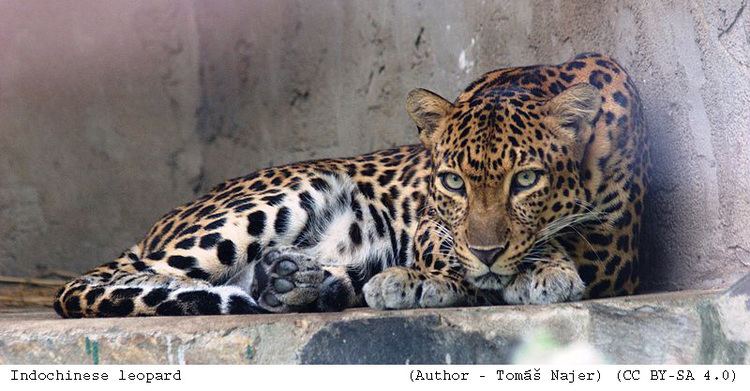 | ||
Similar Leopard, Roaring cats, North‑Chinese leopard, Felidae, Sri Lankan leopard | ||
The Indochinese leopard (Panthera pardus delacouri) is a leopard subspecies native to mainland Southeast Asia and southern China. In Indochina, leopards are rare outside protected areas and threatened by habitat loss due to deforestation as well as poaching for the illegal wildlife trade.
Contents
- Indochinese leopard panthera pardus delacouri kaeng krachan np thailand
- Characteristics
- Distribution and habitat
- Threats
- Habitat destruction
- Illegal wildlife trade
- References
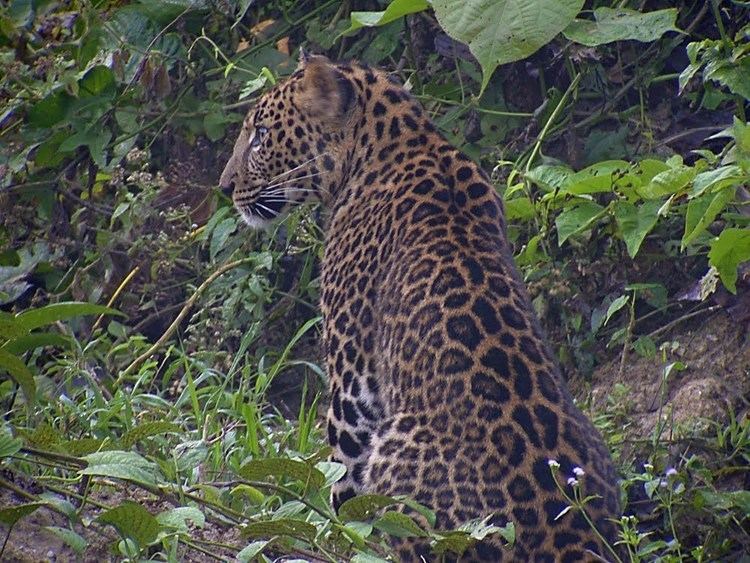
The trend of the population is suspected to be decreasing. The extent of the population decline revealed by a 2016 study surprised the researchers: its population is believed to be 1,000–2,500 individuals, with only 400–1,000 breeding adults.
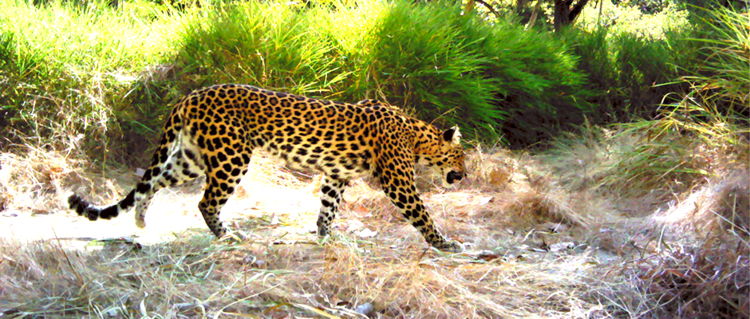
Indochinese leopard panthera pardus delacouri kaeng krachan np thailand
Characteristics
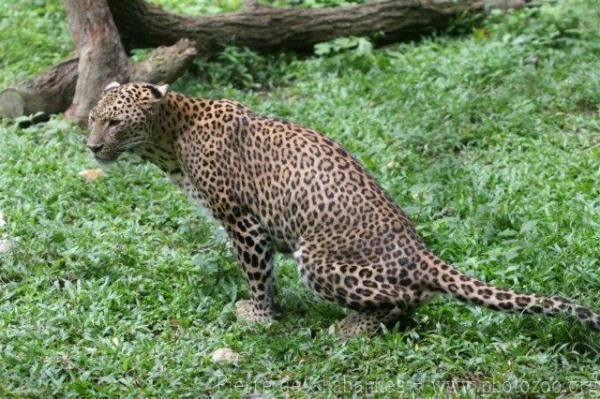
There appears to be a disjunction around the Kra Isthmus, where the population changes from predominantly black forms south of the Isthmus to predominantly spotted forms north of the Isthmus. Records from camera-trapping studies conducted at 22 locations in Peninsular Malaysia and southern Thailand between 1996 and 2009 show that only melanistic leopards were present in samples south of the Isthmus. In the dense tropical forest habitat in part of their range, melanism is quite common, and black leopards have a selective advantage for ambush.
Distribution and habitat
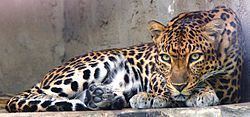
The Indochinese leopard historical distribution range includes Myanmar, Thailand, Malaysia, Laos, Cambodia, Vietnam and South China. As of 2016, the species is functionally extinct in Vietnam and Laos and nearly extinct in Cambodia and China. Two strongholds and one priority site have been mentioned: Peninsular Malaysia and the Northern Tenasserim Forest Complex on Thailand-Myanmar border on the one side and eastern Cambodia on the other.
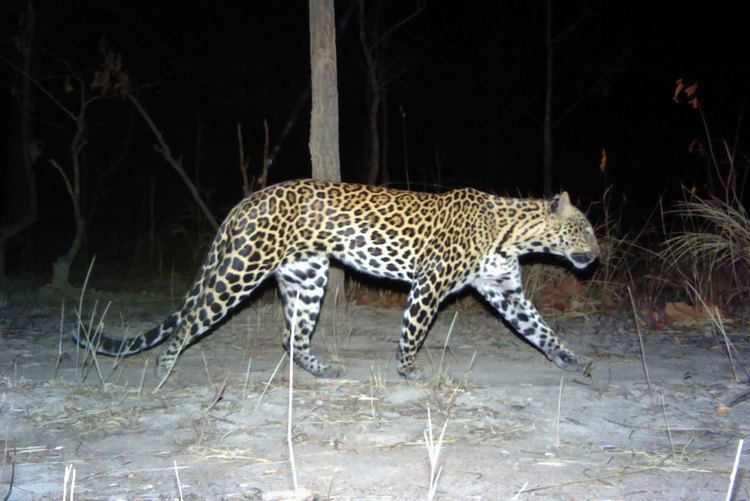
In Myanmar's Chatthin Wildlife Sanctuary, leopards declined so drastically between the 1940s–80s, that by 2000 were estimated being close to locally extinct.
Since the mid-1990s, leopard-oriented field research was carried out in only two protected areas in Thailand:

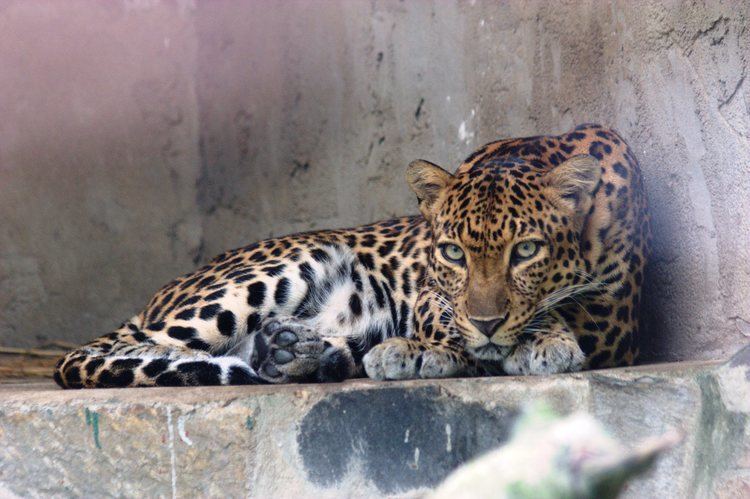
Between April 2003 and June 2004, 25 different leopards walked past camera traps set up over an area of 500 km2 (190 sq mi) in the Nam Et-Phou Louey National Protected Area in Laos. Leopards are reported to occur in Laos' Nam Kan National Protected Area as well.
In Hala-Bala Wildlife Sanctuary on the Thai-Malaysian border, only two leopards walked past camera traps deployed between October 2004 and October 2007.
In April 2010, a spotted leopard was camera-trapped in the Taman Negara Endau-Rompin National Park in Malaysia's southern state of Johor, where previously only black leopards were believed to roam.
While the wild boar, macaque and lesser mouse deer were identified as the main potential preys for the leopard in a highly fragmented secondary forest in Malaysia's capital agglomeration, construction activities had the most profound effect on occupancy status of wild boar and macaque. Yet, mouse deer was mostly affected by deforestation activities.
Threats
There are few contiguous areas left where leopards have a chance of long-term survival. They are primarily threatened by habitat destruction following large–scale deforestation, and prey depletion through illegal hunting.
An increasingly growing threat is hunting for the illegal wildlife trade, which is showing its potential to do maximum harm in minimal time: leopards are increasingly being used as substitutes for tiger parts in traditional Chinese medicine, with the price of leopard parts rising as tiger parts become scarce.
Habitat destruction
Human traffic inside protected areas negatively affects leopard movements and activity. They show less diurnal activity in areas more heavily used by people. In villages located in Laos' protected areas, consumption of deer and wild pig is estimated at about 28.2 kg (62 lb) annually per household — an offtake amounting to 2,840 kg (6,260 lb) ungulates per 100 km2 (39 sq mi), which is equivalent to the meat required to sustain several leopards per 100 km2 (39 sq mi).
In a highly fragmented tropical rain forest within Malaysia’s capital agglomeration of Klang Valley leopard density has been estimated at 28.35 individuals per 100 km2 (39 sq mi), which is one of the highest leopard densities reported. As a result of rapid shrinking of the forests, individuals may have been pushed into the remaining forest in this area, so that their population is unexpectedly high. Leopards were mostly affected by construction activities conducted inside the forest.
Illegal wildlife trade
Substantial domestic skin markets exist in Myanmar, in Malaysia for traditional medicines, and in China for skins and bones, latter particularly as substitute for tiger in traditional Asian medicines and tonics. In China, the use of stockpiles of leopard bone is still permitted by the government by medicinal manufacturers, despite the domestic trade ban.
In Myanmar, 215 body parts of at least 177 leopards were observed in four markets surveyed between 1991 and 2006. Among the body parts, a leopard penis and testes were openly traded, along with other parts of the freshly killed animal. Three of the surveyed markets are situated on international borders with China and Thailand, and cater to international buyers, although leopards are completely protected under Myanmar's national legislation. Effective implementation and enforcement of CITES is considered inadequate.
